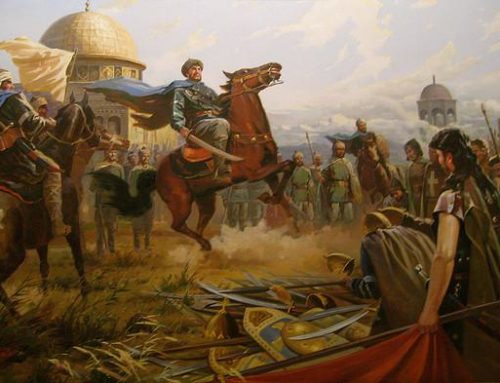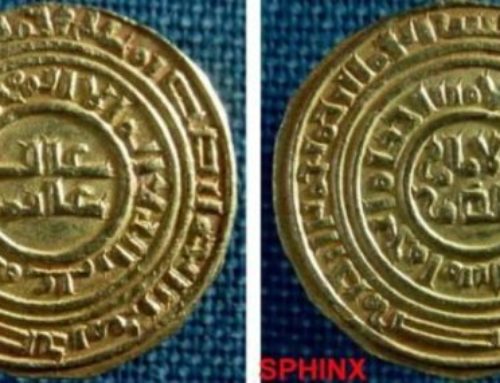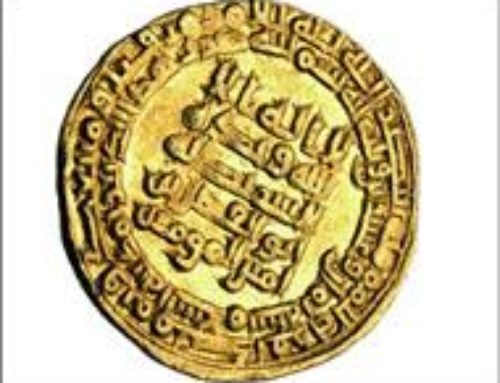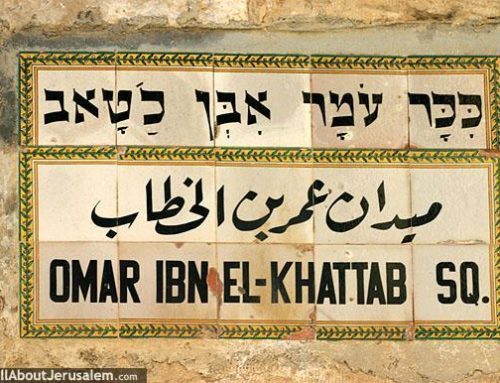This is the definitive overview of the facts and history of the Jerusalem Crusades. Here is a summary of the topics covered:
The Jerusalem Crusades History
The Reasons Behind the Jerusalem Crusades
The First Crusade (1st Crusade)
Inhabitants of Jerusalem united against the Western Crusades
The Siege of Jerusalem in 1099
The Second Crusade (2nd Crusade)
The Latin Kingdom of Jerusalem
Preparations for Liberating Jerusalem
The Battle of Hattin: Muslims Retake Jerusalem
The Third Crusade (3rd Crusade)
The Jerusalem Crusades History
Prior to the Jerusalem Crusades, the Muslim world, including Palestine, was weak, primarily because of internal conflicts brought on by the many warring rulers in the region; the Fatimid in Egypt, the Abbasid in Iraq, and the Seljuk Turks in Palestine. [1]
This weakness proved to be a contributing factor to the attacks carried out by the Crusaders, as the Europeans were emboldened by it.
One more critical factor that paved the way for Crusaders to attack the Holy Land,[2] was the cruel persecution of Christians in Jerusalem at the hands of the Seljuk Turks.[3]
Still, prior to the attack of the city, Jerusalem was restored to the Fatimids and the Turks were kicked out of it.[4]
How Many Crusades Were There?
Some sources state a total of 9 crusades in the Holy Land of Jerusalem ending with Edward I’s Ninth Crusade.
However the crusades were a series of military expeditions with at least 6 more military campaigns labeled crusades.
That is a total of 15 crusades.
The first 3 crusades are the most commonly known and as such we’ve covered them in more depth in this article.
Why Did the Crusades Happen? The Reasons Behind the Jerusalem Crusades:
Crusaders, although they may historically appear to have a single religious motive, had many other non-religious rationales.[5]
In 1095, Pope Urban II called for the Crusaders to bear arms to liberate Jesus’ tomb and to rescue Christians in the east[6] in an attempt to restore Roman Catholic history in Jerusalem.[7]
Driving Turks out of Palestine was a mere excuse; as the Arab inhabitants of Jerusalem drove Turks out of the city before the Crusaders reached it. However, this did not stop them from destroying the city and occupying it.[8]
The First Crusade (1st Crusade)
The First Crusade (1096-1099) [10] that began with an improvised movement of armed pilgrimage that lacked military and political planning.[11]
Because the Pope promised warriors forgiveness, the Crusade was an opportunity for the poor and destitute to look for a better life and wealth outside of feudal Europe.[9]
This brought about the first expedition, the People’s Crusade.
The People’s Crusade consisted mainly of farmers, poor and enthused groups of Europe, most of whom died on the journey to Jerusalem itself .[12] To them, the journey would be completed by a prayer at the Church of the Holy Sepulcher[13]
Who Led The First Crusade?
Godfrey of Bouillon, Bohemond of Taranto, Raymond of Saint-Gilles and Hugh of Vermandois led the more organized Crusader armies in the Prince’s Crusade march to the Holy Land.[14]
While Peter the Hermit, a priest, led the People’s Crusade that preceded it.
Inhabitants of Jerusalem united against the Western Crusades
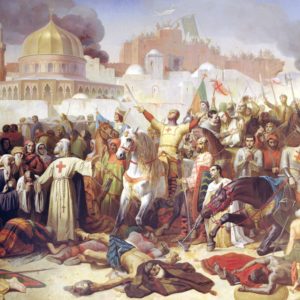
The Siege of Jerusalem in 1099
The notion that the Crusades were motivated by purely religious ideas is refuted by the reaction of crusaders who reached the city towards non-Muslims in Jerusalem.
On June 7 1099, the Crusaders reached Jerusalem and began a siege of the city.[15]
Who Controlled Jerusalem Before the Crusades?
Jerusalem at this time was inhabited by Muslims, Christians, and Jews, all of whom fought against the western Crusaders during this siege of the city in 1099.[15]
The weaponry and power imbalance between the inhabitants and the western armies caused the city to fall after a forty day siege.[16]
Almost all of Jerusalem’s inhabitants who did not flee the Crusaders were massacred.[17] According to history books, about 70,000 bodies were lying in the streets of the Holy City,[18]while the city was looted and destroyed.[19]
Who Won the First Crusade?
The Crusaders won a decisive victory establishing the Crusader states.
The First Crusade is notorious however, more so for the bloody massacre that followed the siege than as a simple victory.
The Second Crusade (2nd Crusade)
The Second Crusade (1147-1149) was a military campaign organised by the Pope in reaction to the Muslim’s capture of the city of Edessa. The armies consisted of the Christians in the West led by King Louis VII of France and King Conrad III of Germany.[21]
From the beginning, the Second Crusade didn’t bode well. In October 1147, King Conrad and the Germans were forced to retreat after their failed attack at Dorylaeum ( Dorylaion ) due to lack of planning.
In January 1148 King Louis VII and the French were defeated in battle as they crossed the Cadmus Mountains.
Heavy losses with only minor victories in between left the Crusader army stretched thin and exhausted before even reaching their target of Northern Syria.[21]
The Siege of Damascus
The Crusader armies arrived at Damascus on July 24 1148 with a force of around 50,000 and immediately began a siege of the city.
Damascus under the rule of Mu’in ad-Din Unur sought aid from Saif ad-Din Ghazi I of Mosul and Nur ad-Din of Aleppo, who then led the attack on the Crusaders.
Unur had already been preparing for the Crusaders arrival strengthening the fortifications of Damascus. He ordered troops to move to the city having them destroy or divert water sources along the road.
The Crusaders entered through the orchards surrounding the outskirts of the city thinking they would have access to both food and water in these areas.
However the roads were very narrow with dense forestry all around them so this slowed the army’s progress.
The army of Damascus used this to their advantage by setting up ambushes and utilizing guerrilla warfare to repeatedly attack the crusaders as they struggled to make their way.
The Crusaders now with limited sources of food and water were losing what little morale that was left.
After 4 days the Seige of Damascus ended making the second Crusade a crushing failure.
The Latin Kingdom of Jerusalem
Shortly after the First Crusade, the city of Jerusalem became a home for soldiers and warriors from all around the western world.[20]
This marked the start of the Latin Kingdom of Jerusalem, which lasted for 88 years (1099-1187) and rose again after the death of Salah Al-Din for a brief 10 years (1229-1239).[21]
Throughout the first period of 88 years of Crusader rule in Jerusalem, Muslims and Jews were barred from entering the city.[22]

Preparations for Liberating Jerusalem
For many years, Muslim rulers were preparing to restore Jerusalem and to bring it back under Islamic rule.
The most serious preparations were taken by the Zengi family, the rulers of Aleppo and Mosul in twelfth century.[23]
Imad Al-Din and his son Nour Al-Din were determined and well prepared to fight Crusaders in and around the Holy Land.[24] They were assisted greatly by a well-connected and powerful Kurdish family; the Ayyubis.
The Ayyubis allied themselves with the Zengis allowing them both to acquire new territories which they unified as one nation.[25]
The Battle of Hattin: Muslims Retake Jerusalem

Salah Al-Din Al-Ayyubi, known as Saladin in the west, was one of the most prominent military leaders of the Middle Ages. His intelligence, along with his personality, helped him utilize the weaknesses of the Crusaders, capitalizing on their internal strife and rebellion.
He helped restore Egypt to the Zengi family after the death of the last Fatimid ruler and established a strong army that finally fought many battles against the Crusaders in the Holy Land.
All the aforementioned events paved the way to the famous Battle of Hattin,[26]which took place on the 4th of July 1187.[27]
By October of the same year, Jerusalem was restored to Islamic rule and all Crusaders were kicked out of the Holy City.[28]
Salah Al-Din took great care of the city. He cleaned the mosque and purified it with rose water, allowed the Crusaders to leave the city freely after paying ransom, [29] rebuilt the walls of the city[30] and affixed a pulpit he brought from Aleppo to Al-Aqsa Mosque. The rostrum was actually prepared by Nour Al-Din Zengi specifically for Jerusalem. [31]
Despite the cruel years of Crusade rule over the city, Salah Al-Din showed great mercy towards the Crusaders,[32] as he allowed them to leave peacefully at a price of ten Dinars per man, five Dinars per woman, and two Dinars per child. When individuals could not pay, Salah Al-Din paid for them out of his own pocket.[33]
On the other hand, he allowed native Christians to remain in the city and allowed Jews, after a long time of exile, to reenter the city and live thereon.
Historians maintain that Salah Al-Din behaved in a more Christian manner towards Christians than their own Crusaders did, who had originally came to save them from Islamic persecution. [34]
The Third Crusade (3rd Crusade)
The Battle of Hattin was not the end of the Crusades; it was the beginning of the end.
Between the years 1189-1192, the French and British armies marched to the Holy Land to fight Muslims and to recapture the city.
Under the leadership of King Phillip II of France, and King Richard the Lionheart of England, the western armies besieged and occupied Acre in June of 1189. [35]
However, a disagreement between the leaders, coupled with the illness of the King of France, led the two countries to split, with French forces heading back to France and British forces pushing on to Jerusalem.[36]
In 1191 King Richard the Lionheart of England defeated the Muslim armies in the Battles of Arsuf and Jaffa and took over the Palestinian coast.
Still, he was unable to reach Jerusalem or take over any of the inland territories.
This led to the signing of the famous Ramla Agreement between Salah Al-Din and Richard the Lionheart. The agreement allowed Christians access to Jerusalem as pilgrims, so long as the Crusaders left the land. [37]
Jerusalem after Salah Al-Din
After the death of Salah Al-Din, which occurred shortly after signing the Ramla Agreement, Salah’s sons took over his kingdom.
Unfortunately, his sons divided the kingdom between them, creating smaller kingdoms in the Levant and Egypt.
The Crusaders capitalized on their weakness in division of the Muslim region and took over Jerusalem for the second time.
In 1229, the ruler of Egypt, Al-Kamil, offered Jerusalem to the German Emperor Fredrik II and he ruled the region for ten years.
In 1239 the Sultan of Kerak, [38] and according to some scholars, Sultan of Egypt Ayyub Al-Salih, recaptured the city to end the formal presence of Crusaders in Jerusalem. [39]
This remained the situation until the Mamluks took over the Muslim world. Jerusalem was restored ultimately to their rule. [40]
[1] Ibrahim Baidon, “Jerusalem: the Balancing City of the Islamic History,” Jerusalem: Location and History (2000), p 44
[2] Riad Yassin and Amjad Al-Fa’ouri, the Political and Cultural History of Jerusalem (Jordan: Dar Wael, 2012),p 41
[3] Henry Cattan, Jerusalem (London: Saqi Books, 2000) p26
[4] Teddy Kollek and Moshe Pearlman, Jerusalem: a History of Forty Centuries (New York: Random House, 1968), p 175
[5] Baidon, Jerusalem the Balancing City, p54
[6] Yaseen and Fa’ouri, the Political and Cultural History, p 43
[7] Joseph Millis, Jerusalem: the Illustrated History of the Holy City (London: Andre Deutsch, 2012) p36
[8] Cattan, Jerusalem, p 26
[9] Yaseen and Fa’ouri, the Political and Cultural History, p43-44
[10]Isaac Husseini, The City of Jerusalem: Its Arabism and Status in Islam (Syria and Lebanon: Dar Al-Qalam and Dar Al-Shameiah, 2000), p 125
[11] Millis, Jerusalem, p 36
[12] Karen Armstrong, Jerusalem: One City, Three Faiths (New York: Ballantine Books, 2005), p272
[13] Millis, Jerusalem, p 36
[14] Colin Thubron, Jerusalem (London: Century Hutchinson Ltd, 1986), p 156 and Armstrong, Jerusalem: one City, Three Faiths, p 272
Thomas Andrew Archer, Charles Lethbridge Kingsford, The Crusades: The Story of the Latin Kingdom of Jerusalem (Fisher Unwin, 1894) pg 42
[15] Yaseen and Fa’ouri, the Political and Cultural History, p47-48
[16]Alan V. Murray, The Crusader Kingdom of Jerusalem: A Dynastic History 1099-1125 (Occasional Publications UPR, 2000) pg 64
[16] Baidon, Jerusalem the Balancing City, p 46
[17] Kollek and Pearlman, a History of Forty Centuries, p176
[18] Baidon, Jerusalem the Balancing City, p 46 and Yaseen and Fa’ouri, the Political and Cultural History, p48
[19] Millism, Jerusalem, p36
[20] Id p 37
[21]Cattan, Jerusalem, p 26-27
[20]Brundage, James A. The Crusades: a Documentary Survey (Milwaukee: Marquette University Press, 1962.) pg 136
[22]Kollek and Pearlman, a History of Forty Centuries, p 176
[23] Millis, Jerusalem, p 37
[24]Baidon, Jerusalem the Balancing City, p 46
[25] Id p 47
[26] Husseini, The City of Jerusalem, p 125
[27] Millis, Jerusalem, p 37
[28] Id 37
[29] Yaseen and Fa’ouri, the Political and Cultural History, p 51-52
[30] Mustafa A Hiyari, “Crusader Jerusalem 1099-1187 AD”, Jerusalem in History (2000),p166-167
[31]Baidon, Jerusalem the Balancing City, p 50
[32]Hiyari, Crusader Jerusalem, p 169
[33]Habib Ghanem, Jerusalem: a History and a Cause (Lebanon: Dar Al-Manhel, 2002), p 37
[34]Armstrong, Jerusalem: One City, Three Faiths, p 294
[35]Millis, Jerusalem, p 37 and Baidon, Jerusalem the Balancing City, p 50-51
[36]Millis, Jerusalem, p 37 and Baidon, Jerusalem the Balancing City, p51 and Kollek and Pearlman, a History of Forty Centuries, p 185
[37]Millis, Jerusalem, p 39 and Baidon, Jerusalem the Balancing City, p 52 and Yaseen and Fa’ouri, the Political and Cultural History, p 52 and Kollek and Pearlman, a History of Forty Centuries, p 185
[38]Hiyari, Crusader Jerusalem, p 171
[39]Kollek and Pearlman, a History of Forty Centuries, p 186
[40]Baidon, Jerusalem the Balancing City, p 52-54
Picture 1 https://www.thoughtco.com/crusades-siege-of-jerusalem-1099-2360709
Picture 2 Bouldin getting blessed https://www.thoughtco.com/crusades-siege-of-jerusalem-1099-2360709
Picture 3 http://www.christians-standing-with-israel.org/saladin-conquers-jerusalem-third-crusade.html
https://commons.wikimedia.org/wiki/File:Saladin,_Jerusalem.JPG


